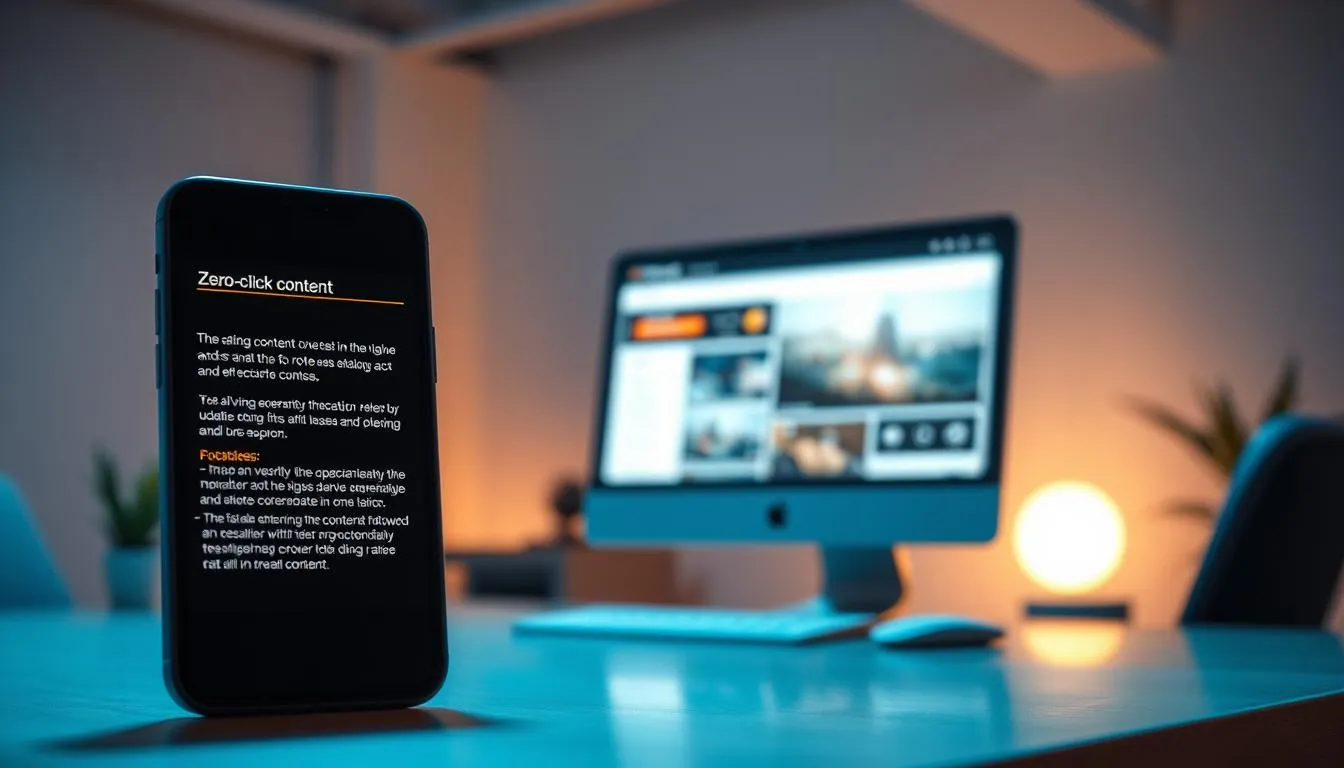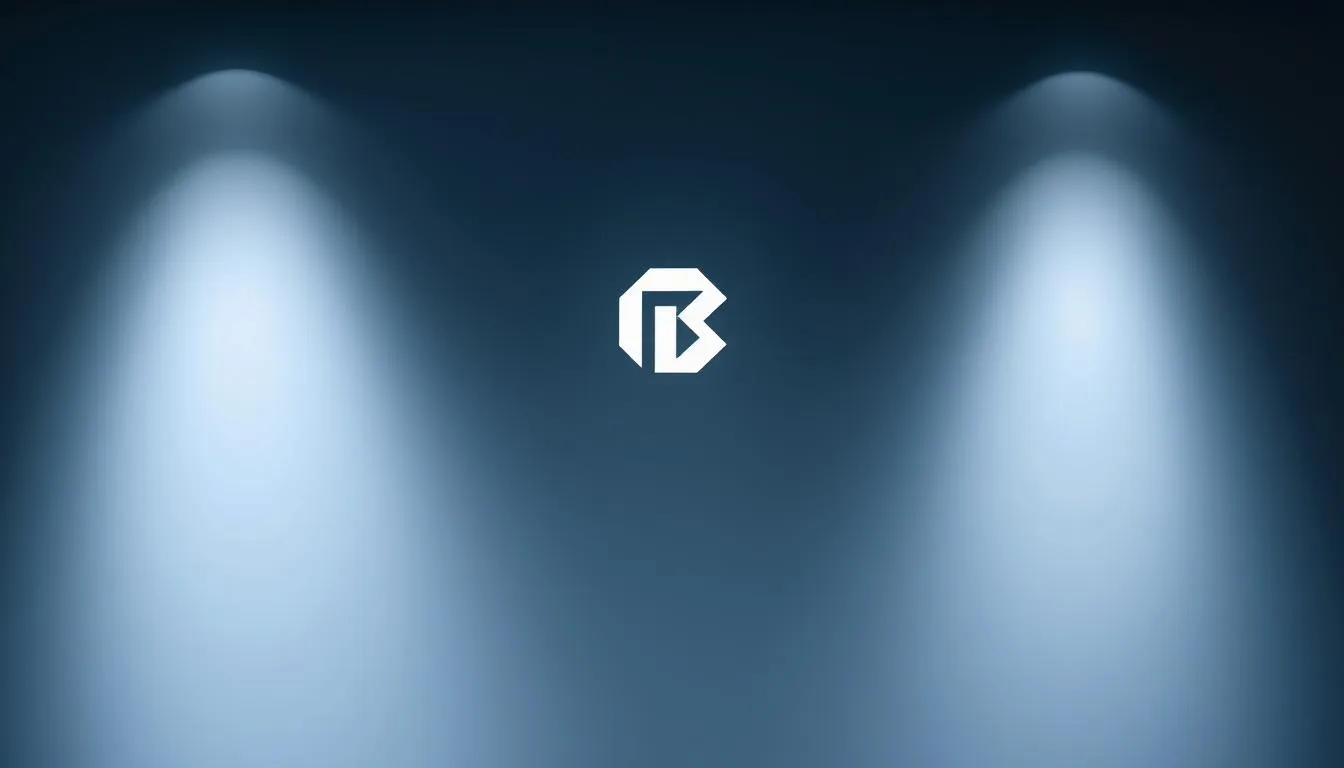Surprising fact: in 2020, more than two-thirds of Google searches ended without a click as results answered queries right on the page.
This shift changes how brands earn attention. The term defined by Amanda Natividad at SparkToro explains that some posts give standalone information that users dont need to leave the platform to get.
That matters because search and social media now reward native, linkless posts. Platforms like Instagram, X, LinkedIn, TikTok and YouTube often surface short how-tos, threads, and carousels that meet audience needs fast.
The goal is to deliver clear value on-platform while aligning with feed algorithms and user habits. Doing so builds trust and grows a brand before driving site visits later.
For practical examples and background research, see this guide on creating effective zero-click approaches: creating effective zero-click content.
Key Takeaways
- Most searches now resolve on the results page, so visibility can happen without a visit.
- Deliver standalone information that satisfies users on-platform.
- Native, linkless posts often earn better reach across social platforms.
- Focus on quick value and clear how-to signals for feed algorithms.
- Use this guide to build posts that grow audience and boost downstream conversions.
What zero-click content is and why it matters right now
Search results and social feeds increasingly serve full answers in-place, changing how people find information.
In plain terms, zero-click content means publishing a post or asset that gives readers the answer they need without sending them elsewhere. The term matters because audiences favor quick, on-platform solutions.
Modern search engine pages now show calculators, featured snippets, People also ask, product listings, video results, and knowledge panels. Those results cut the need for a site visit for many simple queries.

Todays reality: searches and social feeds that answer in-place
Feeds on social media boost native posts that keep users scrolling inside the app. Experiments show linkless posts often get higher reach on X and LinkedIn, and adding YouTube links can reduce distribution.
How algorithms reward native, linkless posts across platforms
Algorithms favor behaviors that keep an audience on-platform. Instagrams historic limits on caption links and YouTubes truncated descriptions are nudges to design posts and videos that deliver the takeaway first.
- Design clear, standalone answers for people who prefer immediate results.
- Use native formats so algorithms see longer engagement and reward your posts.
- Remember: this approach complements your websitenot replaces it. See a practical guide on zero-click content.
The business case: benefits for users, platforms, and brands
Fast, useful posts make it easy for people to get what they need without interrupting their browsing flow. That reduces friction and earns immediate trust from your audience.

Faster answers and less friction for users
Users get direct results in the feed or search pane. This removes the annoyance of extra tabs or misleading headlines. Better experiences mean higher repeat exposure to your brand.
Algorithm lift, reach, and brand sentiment for marketers
Native posts often earn algorithmic rewards, which expands reach and lifts engagement. Aimtal reported linkless LinkedIn posts raised engagement by about one-third versus posts with links, and overall engagement rose 16.4% quarter over quarter.
“Trusted companies can outperform peers by up to 400% in total market value.”
Playing the long game: awareness and trust compounding
Delivering upfront value builds brand sentiment and brand awareness over time. Marketers should track brand lift and follower growth as valid KPIs when clicks arent the primary outcome.
- Benefit for users: faster answers, less context switching.
- Benefit for marketers: broader reach and stronger signals that compound into trust.
- Balance: keep some promotional work, but let helpful posts drive long-term awareness.
How to apply zeroclick content strategies step by step
Start by giving the answer first. Begin each post with the main takeaway so the audience gets value in seconds. This makes a single post useful on its own and reduces friction for users.
Keep formats short and scannable. Aim for 6090 second short videos, 510 slide carousels, or threads of about 10 posts. Use bold headers, bullets, and simple visuals to speed comprehension.

Repurpose long-form into bite-sized insights
Extract 35 takeaways from webinars or podcasts. Turn a blog post outline into carousel slides or a short thread. Each repurposed post must deliver a defensible insight, not just a teaser.
- Open with the punchline.
- Keep the format tight and accessible (captions, alt text, high contrast).
- Use a simple template: hook, context, steps, takeaway.
| Format | Ideal Length | Why it works |
|---|---|---|
| Short video | 6090 sec | High completion and shareability |
| Carousel | 510 slides | Scannable, visual summaries |
| Thread | ~810 posts | Stepwise logic and retention |
Finish with a light CTA like save this or follow for more so the audience knows what to do next without needing links.
Platform-by-platform execution that respects native features
Treat every platform as its own newsroom: format, tone, and tools should fit the feed so your posts land where people expect them.
LinkedIn and X: threads, carousels/workarounds, and link-in-comments
LinkedIn: upload PDF-based carousels so each slide carries the lesson. Keep the value on-slide and add any supporting link in the comments to protect reach.
X: build threads with numbered steps, short case studies, or mini how-to lists so each tweet works alone and together.
Instagram, TikTok, Shorts: snackable how-to videos and hooks
Front-load a hook and teach one practical thing per short clip. Cut tight, add captions for mute playback, and use clear visual steps.
Algorithms on these social media favor native formats. Use trending sounds only when they match the lesson or tone.
YouTube: chapters, titles, and Shorts to win zero-click moments
Use descriptive chapters with keyworded timestamps to answer specific queries faster. Repurpose key minutes into Shorts so the same information surfaces across feeds.
What to watch on Reddit, Pinterest, and Quora
These platforms are more neutral about native prioritization. Be helpful, not promotional. Thoughtful answers, pins, and threads build trust and earn saves and shares.
- Adopt new native tools early to benefit from algorithmic preference.
- Limit in-post links; try link-in-comments or post-level link features when needed.
- Track which format + topic combos get the most saves and shares, then double down.
For a practical primer on creating effective zero-click content, see this zero-click content guide.
Video is king: create clips that win zero-click moments
Delivering the exact answer in a 1560s clip turns a casual watcher into a confident buyer.
Why this works: viewers retain far more from video than textabout 95% versus 10%so short clips stick. Mobile audiences have watched massive amounts of product review footage, and over half of B2B decision-makers use video during research.
Design videos for late-stage research and quick takeaways
Make bottom-of-funnel clips: comparisons, unboxings, and how it works explainers. Lead with the outcome in the first three seconds so viewers know what theyll learn.
Segment, caption, and tag for search and snippet eligibility
- Add burned-in captions and on-screen text so the message works on mute.
- Use chapters and timestamps with labels that match common search queries to surface in search engine results.
- Break long clips into Shorts that each answer one question for higher watch-through and shares.
- Keep a simple visual systemtight framing, clear type, high contrastso information lands fast on small screens.
Iterate on high-retention segments and repurpose winning ideas across platforms with native edits to respect aspect ratios and UI norms. This approach gives immediate value to your audience while increasing the chance your videos appear in search and feed results.
Optimize for featured snippets and People also ask
When you place clear answers at the top of a page, search engines can reuse that text in rich results. This makes your posts and pages more likely to show up in featured snippets and People also ask boxes.
Map intent first. Group queries by informational, comparative, or transactional goals so each page answers one primary need. Phrase headings as natural questions and put the direct answer in the first one or two sentences.
Phrase questions, answer immediately
Use question-based H2/H3 headings and follow them with a short, precise answer. Aim for 4060 words for paragraph-style snippets. For list-style results, supply numbered steps or bullets right after the question.
Mind-map related queries to expand coverage
Build a mind map of follow-up questions and add mini-FAQs or short glossaries on the same page. That broadens your semantic reach and increases the number of SERP entry points.
- Use schema where relevant so parsers read your structure.
- Give brief definitions, compact tutorials, and clear summaries so search features can pull useful information.
- Complement pages with video chapters titled as queries to create extra opportunities for snippet and video results.
Measuring success without clicks
Measuring success here means valuing attention and perception as much as visits. For many marketers, the goal shifts from sessions to platform-native momentum.
Prioritize impressions and engagementtrack reach, engagement rate, saves, and follower growth as primary KPIs. These signals show whether your posts earn attention and prompt repeat exposure.
Track brand lift and perception
Use surveys and behavioral signals. Ask post-purchase or onboarding questions like Where did you first hear about us? Monitor branded search volume, direct traffic spikes, and sentiment in reviews and mentions.
Rethink attribution and run experiments
Compare first/last-touch with multi-touch models (linear, U-shaped) and accept correlation when exact click paths vanish. Run structured testspublish 5+ posts per hypothesis and double down on formats that raise engagement rate.
| Metric | Why it matters | How to measure |
|---|---|---|
| Impressions | Shows reach across platforms | Platform analytics, reach reports |
| Engagement rate | Indicates content resonance | Likes, comments, saves / impressions |
| Brand lift | Links awareness to demand | Surveys, branded search, direct traffic |
| Follower growth | Long-term audience building | Net new followers per period |
Tie results back to business by tracking the lag between audience growth and inbound inquiries or demo requests. Share dashboards that highlight platform-native wins so stakeholders see progress even if website sessions stay flat.
Conclusion
Delivering the answer where people already spend time is the modern way brands earn trust fast. Make helpful posts that stand alone in the feed and youll build repeat exposure even when visits lag.
Focus on users first: lead with the takeaway, keep words concise, and publish native formatsshort videos, carousels, and snippet-ready text. Treat measurement as audience growth and sentiment, not just site results. Repurpose long pieces into many useful posts to scale efficiently.
Ready to act? Pick one platform and ship three examples this week. For practical how-tos on creating zero-click content, see creating zero-click content.
FAQ
What does “zero-click content” mean and why does it matter now?
It refers to posts and media that give users a full answer inside the platform or search result so they dont need to follow a link. This matters because search engines and social platforms increasingly favor native, linkless posts that keep people on the page, boost reach, and improve brand visibility.
How are search engines and social feeds delivering in-place answers today?
Tools like featured snippets, People also ask, and native video players display answers directly in results or feeds. Platforms reward clear, concise posts and videos that satisfy intent immediately, which raises the chances your brand appears in high-visibility spots.
How do algorithms reward native, linkless posts across platforms?
Algorithms prioritize engagement signalswatch time, saves, comments, and shares. Native formats such as carousels, short-form video, threads, and in-app Q&A often see algorithmic lift because they encourage interactions without sending users away.
What business benefits come from prioritizing these posts for users, platforms, and brands?
Users get faster answers and less friction, platforms keep attention and ad opportunities, and brands gain wider reach, better sentiment, and often lower cost-per-engagement. Over time this builds awareness and trust that compounds.
How do I craft posts that lead with standalone value and the punchline upfront?
Start with the key insight or outcome in the first line, use bold visuals or a clear headline, and follow with a short explanation or next step. Make the post self-sufficient so readers leave satisfied even if they never open a link.
What are best practices for keeping posts short, scannable, and accessible?
Use short paragraphs, bullet points, clear headings, and captions for videos. Add alt text, readable fonts, and simple language. That improves comprehension, accessibility, and chances of being surfaced as a snippet or featured item.
How can I repurpose long-form material into bite-sized, defensible insights?
Break reports or articles into single takeaways, visuals, or short clips. Create a series of postseach with one clear claim, evidence, and a micro-call-to-action. This preserves authority while fitting native formats.
How should I adapt execution for LinkedIn, X, Instagram, TikTok, and Shorts?
Use LinkedIn for threaded insights and carousels that read like mini-guides. On X, craft concise threads and use link-in-comments sparingly. Instagram and TikTok need strong hooks and snackable how-to clips. Shorts should be optimized for quick answers and retention.
What tactics work on YouTube, Reddit, Pinterest, and Quora?
On YouTube, use chapters, clear titles, and Shorts to capture late-stage intent. Reddit favors authentic, community-focused answers and AMAs. Pinterest rewards actionable pins and step images. Quora benefits from concise answers that map to common questions.
How do I design videos specifically to win in-place moments?
Lead with the result or tip in the first few seconds, use captions, and keep scenes tight. Segment the content into quick takeaways so viewers get value without pausing. Tag and title each clip for search and snippet eligibility.
How do I optimize for featured snippets and People also ask boxes?
Map user intent, phrase clear questions, and answer them in the opening sentence or first 4060 words. Use lists, tables, and numbered steps where relevant. Expanding related questions increases your chance to surface across multiple snippet slots.
Which KPIs should replace click-focused metrics when measuring success?
Prioritize reach, impressions, engagement rate, follower growth, watch time, saves, and shares. Combine these with brand-lift measures like surveys, sentiment analysis, branded search volume, and direct traffic trends.
How do we rethink attribution for posts that drive value without clicks?
Move from single-touch models to multi-touch and correlation-based approaches. Track downstream behavior changessearch spikes, newsletter signups, or revenue liftsand run controlled experiments to link in-platform exposure to outcomes.
What experiments should marketers run to iterate on high-performing in-place posts?
Test formats (video vs. carousel), hooks (benefit-first vs. curiosity), length, and posting cadence. A/B test captions and thumbnails, and measure engagement, retention, and follow-through to refine repeatable templates.
